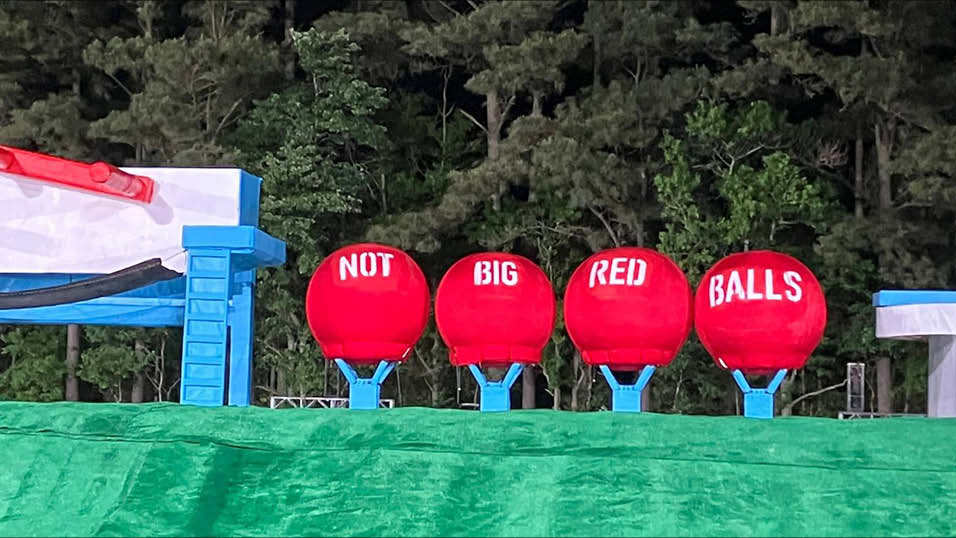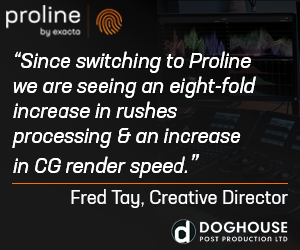Drama report: The grade provides a stylish and consistent ‘look’ to a drama, but a great grade can enhance mood, focus and narrative flow. Jon Creamer asks the experts

Simone Grattarola
Time Based Arts
War and Peace, Peaky Blinders, Black Mirror: White Christmas, Marvellous, War Book
Because we’re more of a commercials facility we tend to get involved in TV dramas when they’re being made by a director or director of photography that knows us. So because I have that close relationship with them already I’m often involved quite early in the process at the point of doing camera tests. So we’ll contribute at an early stage with references and creating LUTs [Lookup tables]. The DoP will ask my advice on things like what the resolution is like on a particular camera when you make it more ‘contrasty’? Is it still holding up? is there detail in the highlights? Essentially they are trusting your eyes as well as their own. You become part of their camera department.
We’ll spend a day grading a 60-second commercial and we’ll only get two days to grade a 60-minute programme for broadcast. But I can bring some of the attention to detail that is involved with commercial grading to longer form work. You have to temper it though because the budget isn’t there all the time in the broadcast work and you have to work at a faster pace than in commercials. Also television drama is narrative driven, you’re not crafting a look from every single frame. People appreciate that it’s a moving image. Also, it’s often been crafted more by the lighting cameraman on set. On Peaky Blinders, for instance, it’s beautifully crafted already so you’re standing on the shoulders of giants on a show like that. It is all in the lighting so you’re an enhancer as much as anything. On War and Peace there were a lot more set ups and a lot more exterior daytime shots so I was contributing more on that. I have a relationship with (DoP) George Steel so he would send me stills during shooting. That meant that we had quite a firm idea of what we wanted before we got into the nuts and bolts of the grade.
You have to have a bit more empathy when you approach long form grading. You have to position yourself as an audience member. We have a projection suite as well now and we look at that as well as the monitor. It gives us a different way of looking at the drama on a larger canvas.
What makes a good grade is being prepared and being involved early on in the process. You prepare well so that when you come to the work you bring your ideas but you don’t necessarily run with just one idea, you try things and you experiment. I like to try to build in a day before the actual grade for a playtime grade. For me that prep allows me to be instinctive in the grade itself. In commercials you’re sat down in front of the client and you’ve got to pull something out of the hat in an hour or two. You can’t do that in broadcast work. You have to be well prepared. That building block is essential. From then on you’re using your experience and appreciating the subject matter and appreciating subtlety.
To be a good colourist you have got to be a good listener and a good interpreter of other people’s visions whilst also having one yourself. There’s an art in interpreting other people’s visions. Also, when I’m teaching assistants I always teach them that grading is also about being able to match things, to be able to analyse reference frames and be an amazing mimic. You have to understand what is in that particular frame: What colours are there in the blacks? What colours are there in the highlights? What the skin tone is doing in that shot and how do I match it to the next shot? You need to have the ability to analyse all those things really quickly as well but that takes a lot of experience. The more work you do the better you get.

Paul Staples
Encore
Humans, Broadchurch, Ripper Street, Mr Selfridge, Murdered By My Boyfriend, The Suspicions of Mr Whicher
I very much enjoy being involved in the creative process from the beginning and generally, being engaged from the pre-production stage onwards is a successful way to work. The DP and/or director will shoot camera tests prior to production filming. Along with this test footage, they will share with me stills from films, fine art, and photographs that act as a mood board. This gives me a sense of what they are aiming for and informs the look I develop as I get to work on the test footage. Sometimes the look will come in our first session together, otherwise the DP and I will continue to work on it as the series moves in to production. Whilst shooting the DP and I will share shots and feedback and continue to develop the look until we reach and hopefully even surpass his vision for the project.
Principally I listen to what the client is trying to achieve and enable it. So much of our job is listening and engaging with a creative dialogue surrounding colour and aesthetics and drawing out the vision of the filmmaker. To do so, I may offer ideas and suggestions but ultimately I do feel strongly that we are here to enable the filmmaker’s vision, not swamp it.
The first stage is establishing a general look that we are happy with. Then we will spot through the episode, getting a better feel for the show. I’ll then go back and start to fine tune. I then tend to work in a linear way, getting each scene and shot as I want it before progressing. However, going back to a shot or scene several times is also common. I wouldn’t suggest that there are too many hard rules in reference to process, I think it’s just that the way you are taught stays with you.
I feel that I work quite instinctively but that has been primed by a lifetime of visual study. I studied photography and just loved being in the darkroom. Moving in to grading was a very natural extension of that training. Of course you continue to absorb and analyse. My clients also keep me primed as to the shows to watch out for.
A key question is if the grade will need to reflect a change of period during the series. Recently I graded Undercover for the BBC. The series included flashbacks, however there was also a whole episode that was in flashback. It was vital that I knew this as it would massively inform the grade. The look of the flashback sequences had to be different enough for the audience to register that they were in different period but as an entire episode would be in flashback, the look also had to be not too distracting resulting in it becoming tiring to watch.
To become a good colourist you need a combination of both hard and soft skills. I’d say a good pair of ears and the ability to pick up on non-verbal communication are essential. You need to have the ability to read between the lines and understand what the client is asking for even if they may not be asking for it in technically literal terms. Also of importance, is the ability to deliver a grade that wouldn’t perhaps adhere to your first instincts but is one that suits the piece.

Gareth Spensley
Molinare
The Tunnel, The Durrells in Corfu, Doctor Who, London Spy, The A Word
I always try and get involved in a project during prep. At the prep stage we’re often initially talking about base LUTs for a show, general concepts of contrast, saturation, tints and tones. On most of the larger budget projects we’ve had a dailies colourist or an experienced DIT doing a leveling pass through the rushes so they are the ones worrying about any exposure shifts; such as from sunny to overcast takes.
The real starting point of the final grade for me is when I sit down to watch the offline edit. I generally try to let this be the first time I see the narrative run through in its entirety. I’m looking to see where the rushes are working and where I feel I can help the flow of the story. This is my first view and I try to hold on to any ideas I form about characters and plot points; instances like important lines of dialogue where my eye took a while to find the speaking character in a wide shot. This is my chance to establish when I think background details like windows and lamps are adding depth or becoming distracting. I’ll use these thoughts later when I’m in the grade to shift the emphasis from the backgrounds to the characters.
The brief from the director and DoP can take the form of a purely technical conversation or set of notes, or it may range to detailed creative references and swapping of mood boards. I believe in thorough testing and grade setup time. Creating a ‘look bible’ on selected scenes can be invaluable in focusing the production before we commit our efforts to grading a long running series. Allowing everyone in the process to take a copy of the test scenes away to watch over a few weeks really helps make sure the final grade will go smoothly.
I believe in doing several passes of the grade. I find a brisk first pass based on instincts often yields a great starting point. Then I like to watch this through and decide what’s flowing or what is jumping out, adding layers of secondaries in subsequent passes once I have a solid base grade. At this stage I’ll be looking to get the director and DoPs detailed notes on where we’re at. I often prefer to do this in run time rather than in a stop start manner. For me it’s about assessing the grade as a viewer rather than falling into the trap of over analysing a still frame.
It’s about consistency – anyone with an interest in Photoshop can make a single image look great. The toughest part of the job is taking a “look” and imparting that creative idea to all the locations and setups in a narrative.
For The Tunnel we found a great look for low-light interiors that needed some careful consideration when adapting it to a bright, sunny exteriors. This becomes trickier on multi-part series that may be shooting across seasons and we’re often asked to lock down a look while the series is still being shot.
Great grades come from collaboration. I think the best grades I’ve been involved in come from good production design, good costume choices and great photography.
Jon Creamer
Share this story


















